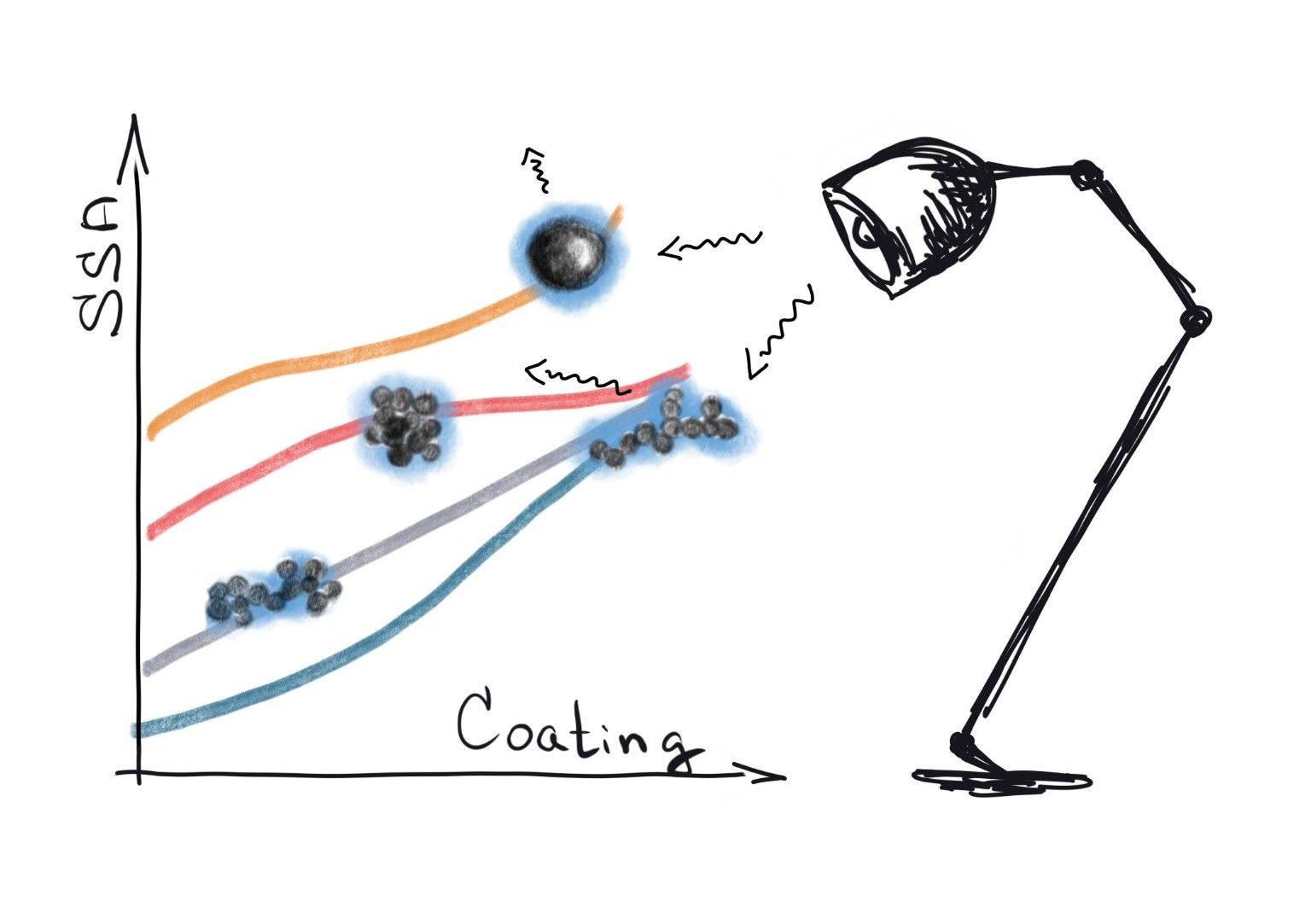Differences and similarities in optical properties of coated fractal soot and its surrogates
Egor V. Demidov, Ogochukwu Y. Enekwizu, Ali Hasani, Chong Qiu, Alexei F. Khalizov
Journal of Aerosol Science, 2024

Abstract
Atmospheric soot (or black carbon, BC) affects climate through solar light absorption and scattering, which depend strongly on the particle morphology and composition. Initially, soot particles are fractal aggregates of spherules made of elemental carbon (EC), but condensation of atmospheric trace vapors adds non-EC materials and often results in particle compaction. The optical properties of such processed soot differ from those of fractal soot, and the changes are caused both by particle volume increase from coating addition and by restructuring of the EC backbone. In laboratory studies of soot optics, surrogates such as carbon black (CB) and nigrosin are often used in place of flame-generated soot. Our goal was to investigate if compositional and morphological differences between these surrogates and soot may produce different processing rates and optical responses. In our experiments, we generated fractal soot, compact CB, agglomerated CB (via coagulation of compact CB), and spherical nigrosin aerosol particles, subjected them to supersaturated vapor of dioctyl sebacate (DOS) to form a coating layer, and investigated the morphological response of these four particle types to coating addition and removal. Using coated and coated-denuded aerosol particles with known composition and morphology, we quantified the contributions of volume increase and restructuring to light scattering and absorption enhancements. By comparing experimental measurements against different particle optics models we show that it is crucial to account for larger, multiply charged particles present in the mobility-classified aerosol. Producing a disproportionately high contribution to absolute values of optical cross sections, such larger particles also result in lesser optical enhancements due to slower growth by vapor condensation. Scattering increases for all particle types due to the addition of a coating layer, and also due to restructuring for fractal soot (strongly) and agglomerated CB (weakly). Absorption increases only due to lensing caused by the coating layer for all particle types. We find that simple optical models, such as Mie, are often sufficient to provide reasonable closure with experimental results for bare and coated aerosols, but only after accounting for the contributions from multiply charged particles, both in terms of their stronger optical cross sections and slower condensational growth. We conclude that CB is an appropriate surrogate for soot in aerosol aging studies where the effects of restructuring do not need to be considered and that nigrosin can be used as a general model for light-absorbing aerosols but is not representative of optical properties of soot.
Full text link
https://doi.org/10.1016/j.jaerosci.2024.106392
Citation
@article{demidov2024differences,
title={Differences and similarities in optical properties of coated fractal soot and its surrogates},
author={Demidov, Egor V and Enekwizu, Ogochukwu Y and Hasani, Ali and Qiu, Chong and Khalizov, Alexei F},
journal={Journal of Aerosol Science},
pages={106392},
volume={180},
year={2024},
publisher={Elsevier}
}